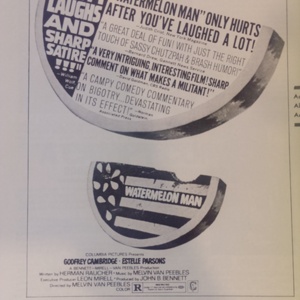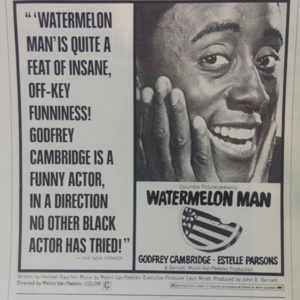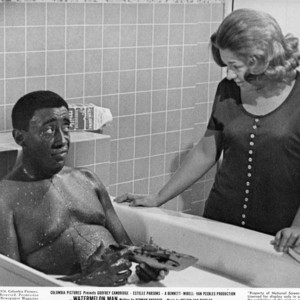Melvin Van Peebles’s 1970 film Watermelon Man exemplifies both traditional methods of representing blacks, as well as the ways black independent filmmakers negated these representations. This Hollywood studio film tells the story of Jefferson Gerber, a white, bigoted insurance agent and his overnight transformation into a black man. Gerber endures several instances of discrimination from his family, co-workers, and neighbors, and he desperately attempts to regain his whiteness. However, each of his efforts fail, and by the end of the film, Gerber comes to claim his new identity as a black man and becomes a militant advocate for black civil rights.
As Watermelon Man was financially backed by Hollywood, the film’s director, Melvin Van Peebles, often conflicted with major film producers in deciding how the film would portray its main character. His decision to cast a black actor, Godfrey Cambridge, in whiteface as the main character marks one of the most significant accomplishments of the film, as it directly opposes the traditional Hollywood practice of portraying blackness as “other” by presenting white actors in blackface. Beyond this, Van Peebles chooses to incorporate historical stereotypes and racist ideals that both provides a comedic effect for the story, and also points toward the film’s social critique. As Hollywood films tend to avoid making political or social statements, these choices allow Van Peebles to subvert Hollywood standards and forward a social critique that calls the prevailing racism within society to the viewer’s attention.
With these circumstances, the film promotional material examined in this exhibit illustrates the ways Hollywood representations opposed those of black independent films while also visually promoting or suppressing the social critique within the film.


